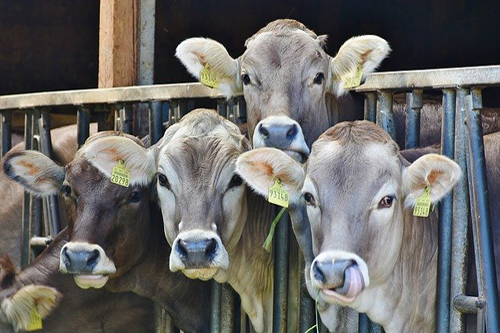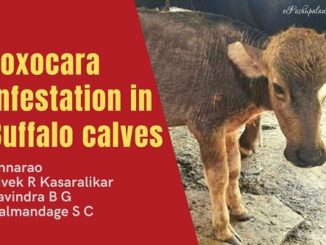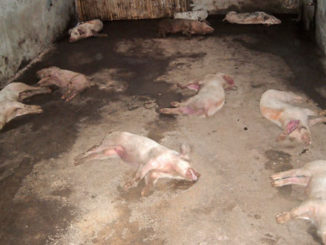There is an old saying, “An ounce of prevention is better than a pound of cure”. This adage becomes more suitable when we come to talk about dairy farming. There are many facts that prove this old saying. These facts are briefly explained hereunder:
- It is only the healthy animal that can produce optimum milk for longer periods. In other words, the full production potential of a particular animal can be realized only if she is healthy from all angles. Almost all the infectious diseases (e.g. Foot and Mouth Disease, Haemorrhagic Septicaemia, Black Quarter etc.), protozoal diseases (e.g. Anaplasmosis, Theileriosis, Babesiosis, Surra etc.), metabolic diseases (e.g. Milk fever, Ketosis, Magnesemic tetany etc.) digestive problems (Bloat, Impaction, Rumenal acidosis etc.) and painful conditions (e.g. Laminitis, Mastitis etc.) have reductive effect on milk yield. Preventing occurrence of these diseases will definitely sustain milk production for longer periods that too at higher production level.
- The farming business can be lucrative only when cost of milk production is kept at lowest possible level. It could be possible only when policy of ‘prevention of diseases’ is followed rather than policy of ‘treatment of diseases’.
- Some diseases are highly fatal. There is no possible cure available yet. The best examples of such diseases are rabies and tetanus. Preventing such diseases is the only option.
- Some diseases are not fatal but they have huge economic impact on farming business. A few examples of such diseases are brucellosis, subclinical mastitis, repeat breeding especially in Cross Bred cow, anoestrus especially in buffalo, tuberculosis (TB), paratuberculosis (JD) etc.
- Some diseases are curable when the right treatment is instituted immediately after the onset of pathology. When treatment is delayed, these diseases can become fatal or there can be any sort of permanent disability. Best examples are acute mastitis and acute acidosis.
- Injudicious use of antibiotics in veterinary practice has lead to drastic increase in disease resistance. This has public health importance also. When preventive strategies are followed to curtail infectious disease in a herd, the issue of disease resistance will automatically be wiped out. When there is no disease in the herd, antibiotics will remain on the shelf and there will be no risk of public health hazard.
- Healthy calves always grow faster than diseased calves. Those calves who get cured after becoming sick will attain puberty later than those calves that remain healthy throughout their life.
- Feed efficiency is always lowered in diseased conditions. Digestive upsets like acidic or alkaline indigestion, diarrhoea or constipation has intense effect on digestion and absorption of various nutrients. Intestinal helminths put additional burden on feeding regimes.
- Toxicities have variable effect on animal productivity. Acute toxicities like nitrate/nitrite or cyanide toxicity can be fatal. Ingestion of more than critical level of OPIs (organophosphate insecticides) or CHCs (Chlorinated hydrocarbons) can also be fatal. Mycotoxins or other chronic toxicities will cause infertility. The latter also has public health importance.
- Milk fat is the most important economic element of farming system. Feeding of rancid fat (as observed in stored rice polish) will quantitatively reduce fats in milk. Rancid fat may also impart bad odour or taste to milk. Avoidance of stored rice polish (older than nine days of storage) in the diet of lactating animals will have positive effect on milk fats.

Management strategies to prevent diseases
Following policies may be formulated and implemented in individual farms to prevent various diseases.
- Regular vaccination
- Effective control of endo- and ecto-parasites
- Feeding of well balanced diet compounded with locally available ingredients
- Cultivation of fodders with recommended agronomic practices
- Harvesting fodders at optimum stage
- Proper storage of feed in well ventilated rooms
- Stopping purchase of new animals during harsh months or when fodder is scarce
- Isolation of newly purchased animals for at least three weeks
- Before new purchases, getting animals tested for brucellosis, TB, JD etc.
- Sincerely following biosecurity measures at the farm
-
- Washing tires of all incoming vehicles
- Preventing entry of stray animals, wild animals, trespassers etc.
- Restricting entry of friends and relatives into animal pens
- Making unavoidable visitors to wear sterilized clothing
- Purchasing all medicines, chemicals, fertilizers etc. from reputed firms only
- Using suitable identification methods for locating the animal from birth till death
- Following post-milking teat dipping
- Isolating sick animals immediately
- Instituting suitable treatment of sick animals at once
- Recording all treatment related events meticulously
- Avoiding quackery or self treatment especially for udder and uterus ailments
- Always using sterilized hypodermic syringe and needle, of proper size, diameter and bevel
- Keeping medicines, chemicals and other hazardous things under lock
- Keeping trained labour or providing sufficient training from reputed institutes to newcomers at the farm
These management strategies will help the farmer to effectively implement the policy of prevention rather than policy of treatment.







Be the first to comment